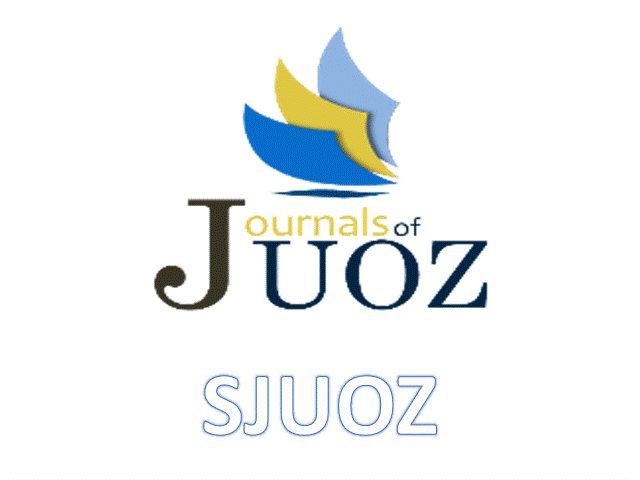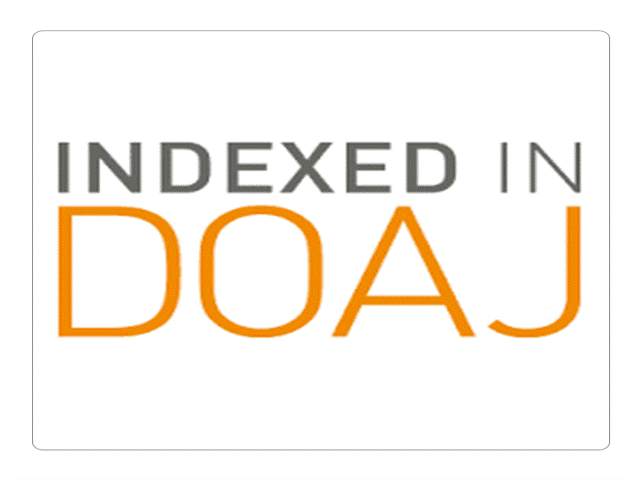Fungi Associated with Freshly Harvested Corn Grains in Duhok Governorate
Keywords:
Corn grains, fungi, aflatoxin, IraqAbstract
Freshly harvested grains of five corn hybrids collected from Duhok governorate were screened for their associated mycoflora using agar plate and blotter methods. The percentage occurrence of the isolated fungi was varied with respect to corn hybrid. Aspergillus niger, A. flavus and Rhizopus spp were the most frequently detected species. From 4 to 70% of grains were infected with fungi and their percentage germination ranged from 53 to 98%. The species composition and percentage germination of grains differed among corn hybrids. A total of 48 strains of A. flavus obtained from different hybrids were tested for their aflatoxigenic potential. The positive strains ranged from 70 to 100%.
Downloads
References
Abbas,H. K., Zablotowiski, R. M., Weaver, M. A., Horn, B. W, Xie, W. and Sheir,W. H. (2004). Comparison of cultural and analytical methods for determination of aflatoxin production by Mississipi Delta Aspergillus isolates. Can.J. Microbiol.50:193-199.
Abdel-Malek, A. Y., EI-Maraghy, S. S. M, and Hasan, HA. A. (1993). Mycotoxin-producing potential of some Aspergillus, Pnicillium and Fusarium isolates found on corn grains and sunflower seeds in Egypt. J. Islam. Acad.Sc.6:189-192
Abdullah,S. K and Kadhum,S. A.( 1987). Seed mycoflora of Sorghum bicolor in Iraq. Arab Gulf J. Scient.Res.Agric.Biol.Sci. 5:401-410.
Abdullah, S. K and Al-Mousawi, K. A. (2006). Diversity of fungal species associated with maize (Zea mays L.) cultivars growing in Iraq. Proc. 12th Cong. Medit. Phytopathol. Union, Rhodes Island, Greece, pp69-72.
Abdullah, S.K. and Al-Mousawi K. A. (2009). Incidence of Aspergillus species in seeds of corn and Sunflower cultivars grown in Iraq and aflatoxin-producing potential of Aspergillus section Flavi. The first scientific conference for biological sciences, University of Mousel, Iraq.pp.299-307.
Adebajo, L. O., Idowu, A. A. and Adesanya, O. O. (1994). Mycoflora and mycotoxins production in Nigerian corn and corn-based snacks. Mycopathologia 126:183-192.
Al-Heeti, A. A., El-Behadli, A. H., and Al-Adil, K. M. (1980). Incidence of mycotoxins in stored corn in Iraq. Iraqi Journal of Agricultural Sciences 15:129-137.
Al-Rawi, A. A., Ramadan, N. A., and Al-Iraqi, R. A. (2011). Isolation of Corn seed borne fungi and specification the aflatoxigenic species. Journal of Al-Rafedaen Scinces, 22: 13-22.(in Arabic).
Asiedu, I J. (1989). Processing Tropical Crops. A Technological Approach. The MacMillan Press, London and Basingstoke.
Bhutta, A. R.,Bhatti, A. H.and Ahmed, I.( 1997). Effect of seed-borne fungi on oil content and fatty acid profile in sunflower. Helia 20:67-72.
Bokhari, F. M. (2002). Aflatoxin production by Aspergillus flavus isolated from different foodstuffs commonly used in Jeddah region, Saudia Arabia. Pak. J. Biol. Sci. 5:69-74.
Davis, N. D., Iyer, S. K. and Diener, U. L. (1987). Improved method of screening for aflatoxin with a coconut agar medium. Appl. Environ. Microbiol. 53:1593-1595.
Etcheverry, M., Nesci, A., Barros, G., Torres, A. and Schulze, S. (1999). Occurrence of Aspergillus seton Flavi and aflatoxin B1 in corn genotypes and corn meal in Argentina. Mycopathologia 147:37-41.
FAO. ( 2002). FAO STAT Database. Food and Agricultural Organisation, Roma, Italy. URL: http://apps .fao.org/page/collections.
Godika, S., Agrawal, K and Sing, J. (1996). Fungi associated with seeds of sunflower (Helianthus annuus L.) grown in Rajasthan and their phytopathological effects. J. Phytol. Res. 9:61-63
Hedayati, M. J., Pasqualoto, A. C., Wan, P. A., Bowyer, P. and Denning, D. W. (2007). Aspergillus flavus: human pathogen, Ilergen, and Mycotoxin producer. Microbiology 153:1677-1692.
Hocking, A. D.(1997). Toxigenic Aspergillus species. In food Microbiology: Fundamentals and frontiers (eds.) M. D. Dayle, L. R. Beucat and J. J. Montrille. ASM Press Washington DC pp.393-405.
Hussein, S. H. and J. M. Brasel. (2001). Toxicity, metabolism and impact of mycotoxins on humans and animals. Toxicology, 167: 101-134.
Klich, M. A. (2002). Identification of common Aspergillus species. CBS Utrecht, Netherlands.
Lillehoj, E. B. and M. S. Zuber. (1988). Distribution of toxin- producing fungi in nature com kernels from diverse environments. Trop. Sci., 28: 19-24.
Mohammed, A. A., Abdullah,W. R.and Abdullah, S. K.(2010). Identification of Aflatoxigenic and Ochratoxigenic Aspergillus strains isolated from soil and agricultural commodities in Duhok. J. Duhok Univ.13(1) 296-302.
Mostafa, A., Kazem S. (2011). Fungi associated with harvested corn grains of Golestan province in Iran. Annals of Biological Research, 2 (5) : 681-688
Munkvold, G. P. and A. E. Desjardins. (1997). Fumonisins in maize: Can we reduce their occurrence. Plant Dis., 81: 556-565.
Nizar I. and Dawar S(.2009). Detection of seed born mycloflora in Maize (Zea mays L.). Pak. J. Bot. 41(1): 433 - 451
Pitt, J. I. and Hocking, A. D. (1997). Fungi and Food Spoilage. Blackie Academic & Professional. U.K.
Saito, M and Machida, S. (1999). A rapid identfiction method for aflatoxin-producing strains of Aspergillus flavus and A. parasiticus by ammonia vapor. Mycoscience 40:20-208.
Schroeder, H. W. and Boiler, R. A. (1973). Aflaoxin production of species and strains of Aspergillus flavus group isolated from field crops. Appl. Microbiol. 25:885-889.
Sulaiman, E. D. and Hussain, S. S.(I985). Survey of fungi associated with stored grains in silos in Iraq. Pakistan Journal of Scientific and Industrial Research 28: 33-36.
Downloads
Published
How to Cite
Issue
Section
License
Copyright (c) 2013 Raed A. Haleem, Khdija A. Saido, Samir Kh. Abdullah, Sahad N. Aldeen, Ihssan M. Waesi

This work is licensed under a Creative Commons Attribution 4.0 International License.
Authors who publish with this journal agree to the following terms:
- Authors retain copyright and grant the journal right of first publication with the work simultaneously licensed under a Creative Commons Attribution License [CC BY-NC-SA 4.0] that allows others to share the work with an acknowledgment of the work's authorship and initial publication in this journal.
- Authors are able to enter into separate, additional contractual arrangements for the non-exclusive distribution of the journal's published version of the work, with an acknowledgment of its initial publication in this journal.
- Authors are permitted and encouraged to post their work online.








